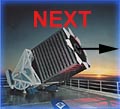| Teachers | ||
 | ||
| Basic | ||
| - Scavenger Hunt | ||
| - The Universe | ||
| - Asteroids | ||
| - Types of Stars | ||
| - Color | ||
| - Galaxies | ||
| Advanced | ||
| Challenges | ||
| For Kids | ||
| To Student Projects | ||
| Types of Stars | ||
 | ||
| Overview | ||
| - Description | ||
| - Concepts | ||
| - Target Audience | ||
| - Classroom Time | ||
| - Real World | ||
| - Solutions | ||
| Background | ||
| Lesson Plan | ||
| Teaching Tips | ||
| Assessment | ||
| Standards | ||
| To Student Project | ||
Types of StarsOverviewProject DescriptionThis project teaches students about how astronomers classify stars and the link between absorption lines and temperature. This project is an excellent introduction to the nomenclature of spectral types and is a good precursor to teaching stellar evolution or galactic astronomy. Through an exercise in classifying, students will learn that the lettering scheme for stellar classification initially came from examining absorption lines. Then students will classify stars by the peak wavelength of their spectra to learn about the modern classification system, which uses temperature to reorder the original types. The old and new classification schemes are compared and a series of questions leads the students to understand the connection between temperature and absorption line strength: for hydrogen alpha absorption, a star needs to be just the right temperature—not too hot and not too cool. Concepts
Target AudienceHigh school and Astro 101 students can use this project as an introduction to stars after learning a bit about light but before learning about stellar evolution. Students who are interested in doing more involved projects on stars might use this activity as a way to acquaint themselves with stellar classification and working with SDSS spectra. Classroom TimeThe full activity can be done in one full hour. If pressed for time, Activity 1 can be assigned as a pre-lab. Real World RelevanceThis project takes the student deeper into the scientific process by using real data to derive actual information about distant stars. Sample SolutionsActivity 1, because it is meant to engage the student, does not necessarily have one right answer. But a sample answer and the answers to the remaining exercises and questions can be found in the link below. To view SkyServer sample solutions, you must be a registered SkyServer teacher. |

 |